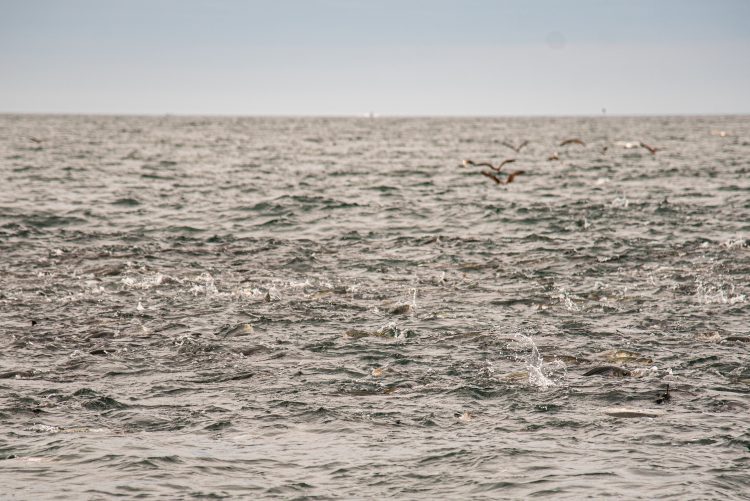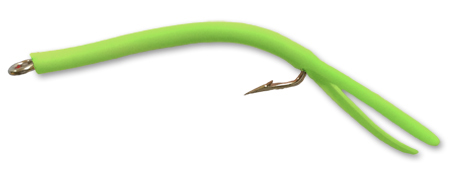Teasers for Fall Run Stripers
Go small to catch big this fall.

One of the most memorable, and frustrating, Montauk blitzes I ever experienced took place in Turtle Cove, the beach just southwest of the iconic lighthouse. The scene must have been similar to the one that, in 1614, inspired Captain John Smith to write of the abundance of stripers, “one might walk dryshod across their backs.”
Yet, for the dozen or more surfcasters launching into the melee, few fish were caught—and one of them had been foul-hooked in the dorsal. The bass had eyes only for the tiny bay anchovies they’d balled up, and none of our “classic” Montauk lures, like the pencil popper, darter, or bucktail, was a close enough match to the 2-inch long, nearly transparent baitfish.
(Note: On The Water is reader-supported. When you buy through links on our site, we may earn an affiliate commission.)
In the fall, many stripers, even larger ones, set their sights on these super-abundant but micro-sized baitfish. These include juvenile fish that have been forced out of their estuarine nurseries by falling temperatures, sand eels invading the surf after summering offshore and balling up for their swim south, and silversides grouping up and heading offshore to their wintering grounds.
Striped bass can be surprisingly picky when scarfing down these 1- to 4-inch baitfish, and the lures that most effectively imitate them can be impossible to cast on spinning gear. Thankfully, the striper fishermen of yore figured that out by adding a small fly ahead of a heavier lure they matched to the hatch and still reached the fish.
An effective teaser can be as simple as a few hackle feathers lashed to a Siwash hook or a piece of colorful surgical tubing threaded onto a Tru-Turn hook, with a barrel swivel added to the eye. Teasers can be as ornate as flies tied to resemble specific baitfish and as specialized as the Red Gill or Tsunami Sand Eel teasers made specifically for this purpose.
Types of Teasers





Rigging Teasers
I’ve toyed with many ways to attach a teaser to my line and have landed on what I think is the most convenient. I want to have to option to remove the teaser entirely without having to rerig, and the best way to do that is to pre-tie my teasers on six-inch lengths of leader with a small, 50-pound-test clip at the opposite end of the line. This makes for an easy and fast addition, removal, or change of the teaser.
In his book, The Trophy Striper, Frank Daignault recommended keeping enough space between teaser and plug for a trophy striper to fit, but this can lead to some unwieldy casting. I like at least 30 inches between teaser and plug; most often, I have between 36 and 40 inches of separation between the attachment point for my teaser and the clip for my plug.
When stripers are dialed into small baitfish, the plug or lure is little more than a vehicle for the teaser. Choose a lure that casts well, even with the added drag of the teaser, and sinks at an appropriate rate for the location in the water column where the bass are feeding. If the stripers are scrounging for sand eels over a distant sand bar, a metal diamond jig is a good choice. If they are sipping spearing off the surface, a needlefish or minnow plug will keep the teaser in the strike zone.
Related Content
2 on “Teasers for Fall Run Stripers”
-
Phil Back in the 80’s there was an article in the OTW magazin about teasers and how to make and use them. I made some and put them to use. My son and I were not disappointed! Thanks for the great time we had, and teasers work. P.
-
brian page I ran into an old timer at the cape and wondered why there was a fly hanging off his line, we talked for a bit and he said “if you aint fishing with a teasers you arent catching” so i tried and immediately my hook up rate increased. yes it gets a bit cumbersome at certain times with a teaser and high wind
Leave a Reply